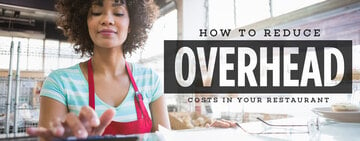Upselling isn’t just about increasing your restaurant's average check size, it’s about creating value for your customers while driving profitability for your business. For restaurant workers and managers, mastering the art of upselling is a skill that balances persuasion with genuine hospitality, ensuring customers feel cared for rather than pressured. Whether you’re a server looking to boost your tips or a manager aiming to improve your restaurant's bottom line, understanding how to upsell effectively is critical. Below, we’ll explore ten actionable tricks and strategies to help you upsell confidently in your restaurant, all while keeping your customers happy and coming back for more.
1. Be Knowledgeable and Anticipate Questions
One of the most powerful tools in your upselling arsenal is menu knowledge. Customers rely on you to guide them through their dining experience, and your ability to confidently describe dishes, drinks, and specials makes a massive difference. When you’re well-versed in the menu, you can highlight vital features and benefits that resonate with their preferences, whether it’s the freshness of locally sourced ingredients, the bold flavors of a chef’s signature dish, or the perfect pairing for their chosen entree.
Equally important is your ability to anticipate and answer common customer questions. Diners often have concerns about portion sizes, spice levels, dietary restrictions, allergens, or preparation methods. By proactively addressing these questions, you can alleviate any hesitations and build trust. When customers feel informed and confident in their choices, they’re more likely to upgrade their order and leave satisfied.
2. Be Transparent and Honest

Customers appreciate when you’re upfront about menu prices, portion sizes, and what they can expect from their purchase. While it might be tempting to gloss over details to encourage higher spending, being clear and truthful builds trust. For example, if you’re recommending a premium dish or add-on, openly share why it’s worth the extra cost. Highlight its unique qualities, such as premium ingredients, larger portions, or exclusive preparation methods, but also be honest about what the customer is paying for.
If a guest asks about the size of a steak or the amount of seafood in a pasta dish, give them an accurate description rather than overselling it. This approach not only sets realistic expectations but also helps prevent disappointment, contributing to a positive dining experience. By being transparent and honest, you’re not just closing a sale, you’re building a reputation for integrity. Customers will be more likely to return to a restaurant where they feel valued and respected, and they’ll be more inclined to accept your recommendations in the future.
3. Connect with Personal Recommendations
One of the most effective ways to upsell is by sharing personal recommendations. When you suggest a dish, drink, or add-on that you genuinely enjoy, your enthusiasm and authenticity shine through, making your pitch far more relatable and convincing. Personal recommendations also allow you to speak from experience, which makes your descriptions more vivid and compelling. If you’ve tried the dish, you can share specific details about its taste, texture, or presentation that a menu description might not capture.
4. Suggest Add-Ons

A simple yet highly effective upselling strategy is to suggest add-ons that enhance the customer’s meal without requiring them to order entirely new dishes. Add-ons like extra toppings, additional sauces, or larger portions can subtly increase the value of each check, contributing to higher sales over time. While these small upgrades might seem minor, their cumulative impact across multiple orders can significantly boost your restaurant's revenue.
Add-ons also work well because they feel like customizations rather than upsells. Customers appreciate the opportunity to tailor their meals to their preferences, and they’re often willing to pay a little extra for that personalized touch. The key to success with add-ons is to frame them as value-enhancing opportunities, incentivizing customers to customize their orders further.
5. Don’t Always Suggest the Most Expensive Items
While upselling is about increasing sales, it’s important to avoid the pitfall of always recommending the most expensive items. Constantly pushing high-priced dishes or drinks can come across as overly salesy and insincere, which can alienate customers and damage trust. Instead, focus on suggesting items that are relevant to the customer’s preferences and provide genuine value, even if they’re not the priciest options on the menu. The key is to read the table and tailor your recommendations accordingly.

6. Suggest High-Profit Margin Items
Focusing on high-profit margin items is a smarter strategy than simply pushing the most expensive options. These items may not have the highest price tag, but they offer the best return for your restaurant, making them a win-win for both your bottom line and your customers. Another effective tactic is to bundle high-margin items with popular dishes, such as offering a high-profit margin drink with a customer’s burger order.
7. Offer Substitutes to the Upsell
A key to successful upselling is providing options, not just pushing a single item. When you offer substitutes or alternatives, you give customers the freedom to customize their order, making them feel more in control of their dining experience. This approach not only increases the likelihood of an upsell but also enhances customer satisfaction by catering to their preferences. By offering substitutes, you’re not just upselling, you’re enhancing the customer’s experience and making them feel like an active participant in crafting their meal.
8. Remember Customer Preferences

One of the most powerful ways to upsell effectively is by leveraging customer preferences, especially when dealing with regulars. When you know what your customers enjoy, you can tailor your suggestions to align with their tastes, creating a personalized and memorable dining experience. This not only increases the likelihood of an upsell but also strengthens customer loyalty, as guests feel valued and understood.
Remembering preferences also allows you to anticipate needs before they’re expressed. For instance, if a regular always asks for extra sauce or a specific side, proactively offering it shows attentiveness and care. This approach drives repeat business, positive reviews, and word-of-mouth referrals, all of which contribute to your restaurant’s long-term success. Doing this also helps your upselling efforts feel more natural and customer-centric, rather than transactional.
9. Alter Your Menu
Your menu is more than just a list of dishes, it’s a powerful sales tool that can influence customer decisions and drive upselling opportunities. Start by designing your menu descriptions to highlight the unique qualities of each dish, using vivid, sensory language to describe food to paint a better picture of the flavors, textures, and ingredients. These detailed descriptions not only make the items sound more appealing but also help customers visualize their meal, increasing the likelihood they’ll order it.
Another effective strategy is to group complementary items together on the menu. For instance, place high-margin add-ons like appetizers, sides, or specialty drinks near the dishes they pair well with. You can also create bundled offers or combo deals that naturally upsell. These bundles provide value while increasing the average check size, and they’re often more appealing than ordering items separately.

10. Know When to Stop
While upselling is a valuable skill, it’s equally important to recognize when to stop with your extra recommendations. Pushing too hard or making too many suggestions can overwhelm customers, making them feel pressured and detracting from their dining experience. If a group seems engrossed in conversation or appears to be in a hurry, they may not be open to additional suggestions. In these cases, keep your recommendations brief and be respectful of their time.
By focusing on genuine hospitality, thoughtful recommendations, and a customer-first approach, you can turn every interaction into an opportunity to add value in your restaurant. When done right, upselling becomes a natural part of the service process, leaving guests satisfied and eager to return. Remember, the goal is to build trust and loyalty, ensuring your restaurant stands out in a competitive industry. With these principles in mind, you’re well-equipped to elevate your upselling game and achieve long-term success.



